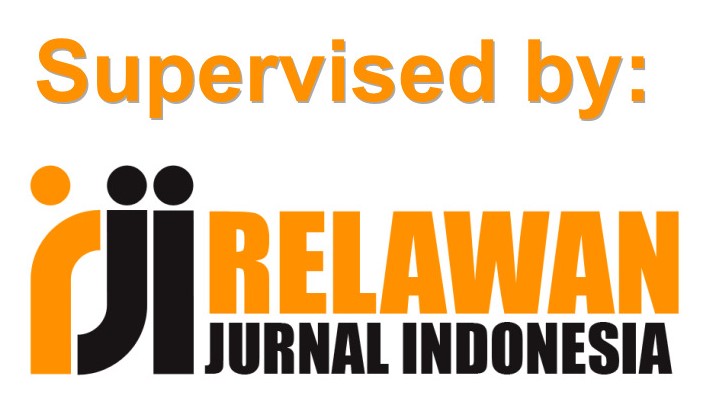Pengaruh Hutang Jangka Pendek dan Hutang Jangka Panjang Terhadap Profitabilitas Perusahaan Manufaktur Sektor Industri Barang Konsumsi yang Terdaftar di Bursa Efek Indonesia
DOI:
https://doi.org/10.31851/jmanivestasi.v6i1.16594Abstract
ABSTRACT
This study intends to decide the effect of momentary obligation and long haul obligation on the benefit of shopper merchandise fabricating organizations recorded on the Indonesia Stock Exchange during 2016-2019. This review includes a quantitative system and the utilization of purposive testing strategies for assessment. The sort of data utilized is optional information gotten from the organization's yearly budget reports. In light of the aftereffects of the t-test, it very well may be seen that (1) the worth of the significance of the variable (X1) is 0.174 > 0.05 which shows that the transient obligation has a positive yet not basic impact on benefits. (2) Variable (X2) got a significance worth of 0.003 < 0.05 which shows that the liabilities drawn have a positive and exceptionally enormous impact on efficiency. (3) The aftereffects of the F test got a significance esteem of 0.004 < 0.05 which indicates that the temporary liability and long-term liability factors at the same time affect organizational productivity. From the results of various straight recurrence tests, the results (R) of 2.080 and b2 are 0.551, then at that time the different correlation coefficient test obtained results (R) of 0.794, this indicates that the independent factor and dependent variable have a solid relationship. In addition, in the coefficient of determination test (R2), the result is 0.516a which explains that the fluctuations in the profitability of the consumer goods industrial sector manufacturing companies can be influenced by independent variables, namely short-term debt (X1) and long-term debt (X2) of 51.6 %.
Keywords : Short-term debt, Long-term debt, Profitability.
ABSTRAK
Penelitian ini bertujuan untuk mengetahui dampak hutang jangka pendek dan hutang jangka panjang terhadap profitabilitas perusahaan manufaktur industri barang konsumsi yang tercatat di Bursa Efek Indonesia selama tahun 2016-2019. Penelitian ini menggunakan metode kuantitatif dan pemanfaatan metode purposive testing untuk pemeriksaan.Jenis informasi yang digunakanadalah data sekunder yang diperoleh dari laporan keuangan tahunan perusahan. Berdasarkan hasil uji t, terlihat bahwa sebagai (1) nilai kepentingan variabel (X1) adalah 0,174 > 0,05 yang menunjukkan bahwa kewajiban transien berpengaruh positif namun tidak kritis terhadap manfaat. (2) Variabel (X2) diperoleh nilai kepentingan 0,003 < 0,05 yang menunjukkan bahwa kewajiban yang ditarik berpengaruh positif dan sangat besar terhadap produktivitas. (3) Hasil uji F memperoleh nilai kepentingan 0,004 < 0,05 yang menunjukkan bahwa faktor kewajiban sementara dan kewajiban jangka panjang pada saat yang sama mempengaruhi produktivitas organisasi. Dari hasil berbagai uji kekambuhan lurus diperoleh hasil (R) sebesar 2.080 dan b2 adalah 0,551, maka pada saat itu uji beda koefisien hubungan diperoleh hasil (R) sebesar 0,794, hal ini menunjukkan bahwa hubungan bebas faktor dan variabel terikat memiliki hubungan yang solid.Selain itu, dalam uji koefisien determinasi (R2) mendapatkan hasil sebesar 0,516a yang menjelaskan bahwa naik turunnya profitabilitas perusahaan Manufaktur sektor industri barang konsumsi dapat dipengaruhi oleh variabel independen yaitu hutang jangka pendek (X1) dan hutang jangka panjang (X2) sebesar 51,6%.
Keywords : Hutang Jangka Pendek, Hutang jangka Panjang, Profitabilitas
References
Arifin, M. A. (2019). Pengaruh struktur modal terhadap profitabilitas pada perusahaan Lq-45 yang terdaftar di bursa efek indonesia tahun 2011-2015. Jurnal Media Wahana Ekonomika, 13(2).
Brigham, Eugene F. dan Houston, J. F. (2015). Dasar-Dasar Manajemen Keuangan. Jakarta: Salemba Empat
Fahmi,I. (2013). Analisis Laporan Keuangan. Lampulo: Alfabeta.
Ghozali, I, Anis Chariri. (2016). Teori Akuntansi. Semarang: Perpustakaan Universitas Diponegoro.
Hery, Widyawati Lekok. (2015). Akuntansi Keuangan Menengah II. Jakarta: Bumi Aksara.
Kasmir, (2018). Analisis Laporan Keuangan. Jakarta: PT Raja Grafindo Persada.
Manurung, Elvy Maria, (2011). Akuntansi Dasar untuk Pemula (Edisi Pertama).Jakarta: Erlangga.
Martono, Harjito (2012). Manajemen Keuangan. Yogyakarta: Ekonesia.
Noviyanti, M. A. (2015). Pengaruh Tingkat Pendidikan Staf Keuangan dan Pengalaman Terhadap Tingkat Penerapan Akuntansi Akrual dan Dampaknya Terhadap Kualitas Laporan Keuangan Pemerintah Daerah (Survey Pada Dinas Pengelolaan Keuangan Dan Aset Daerah Kota Bandung) Doctoral dissertation, Fakultas Ekonomi Unpas.
Prayitno, (2018). SPSS. Yogyakarta: CV Andi Offset.
Soemarso, (2020). Akuntansi Suatu Pengantar (Edisi keenam). Jakarta: Salemba Empat.
Sudjana,(2010). Metode statistika. Bandung: PT. Tarsito Bandung.
Susanti, A dan Hidayat, I. (2015). Pengaruh Hutang dan Modal Sendiri terhadap Profitabilitas.Jurnal Ilmu dan Riset Manajemen (JIRM), 4 (11).
Sutrisno, (2017). Manajemen Keuangan Teori, Konsep dan Aplikasi (Edisi revisi). Yogyakarta: Ekonisia.
Downloads
Published
Issue
Section
License
Copyright (c) 2024 Jurnal Manajemen dan Investasi (MANIVESTASI)

This work is licensed under a Creative Commons Attribution-NonCommercial 4.0 International License.
The copyright of the received article shall be assigned to the publisher of the journal licensed under a Creative Commons Attribution-NonCommercial 4.0 International License in line with the license, authors and any users (readers and other researchers) are allowed to share and adapt the material only for non-commercial purposes. In addition, the material must be given appropriate credit, provided with a link to the license, and indicated if changes were made. If authors remix, transform or build upon the material, authors must distribute their contributions under the same license as the original.



















